|
Most of us don’t remember the days of the smooth cactus, but indeed they did exist. Cacti were actually a friendly lot who welcomed other members of the plant and animal worlds to their proximity.
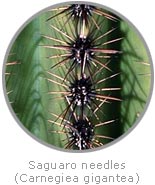 Then came the great drought, for hundreds of years no rain came to nurture the thirsty plants and at some point in time they began to take it personally. Then came the great drought, for hundreds of years no rain came to nurture the thirsty plants and at some point in time they began to take it personally.
It was then that they started growing needles on their exteriors. They did this in order to guarantee isolation from the rest of the world. They also decided in their most manic of moods that they not only didn’t need rain, they didn’t even want to remember how it sounded or felt.
One such cactus was Percival Noyd (better known as Perry Noyd.) Like all other cacti of his generation, Perry began needle-ing when he was still only a decade or so old. It was his goal in life to be the largest Saguaro in the Arizona desert where he would live a reclusive and long life. Perry had heard the legends about the thing called rain, but he had never actually seen, felt, or listened to it. There had been occasions when he was told it was raining, but positioned as he was beneath the sheltering arm of a much larger Saguaro, he remained untouched. He was grateful for the protection from the phenomenon which he had been taught to believe was his enemy. Once, as a very young plant, he had expressed curiosity about the liquid salt that fell from the sky.
“What do raindrops feel like?” he innocently asked.
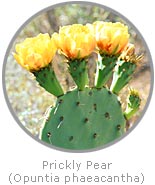 A prickly pear was quick to respond, “It’s fickle and cold. Here one minute and gone in a flash. It makes a lot of racket announcing itself and then, just to be mean, it sends these bolts of fire that really hurt a lot.” A prickly pear was quick to respond, “It’s fickle and cold. Here one minute and gone in a flash. It makes a lot of racket announcing itself and then, just to be mean, it sends these bolts of fire that really hurt a lot.”
“That’s right,” said the Cholla. “We don’t need the rain or anyone or anything under the sun. Keep growing those needles, Perry, and you can keep the universe at a distance.”
Given this very thorough indoctrination, Perry continued to develop both physically and mentally for several years, never questioning the teachings of his elders. Then one day, he began to feel an ache deep inside his body and at first he thought he had the flu or root rot, which are essentially the same thing if you’re a plant. He took the requisite minerals from the earth but the ache did not subside, in fact it grew and grew.
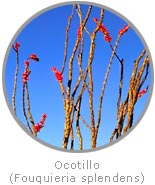 Finally, when he thought he would surely die, he went to see the Ocotillo, which was the expert in the cactus community about illnesses. The Ocotillo pondered and mused and scratched his head, then he pronounced, “I believe you have a very ancient disease which we have not seen in centuries. It is called alone-li-ness. This is a very dangerous malady and if you are not cured quickly it could spread.” Finally, when he thought he would surely die, he went to see the Ocotillo, which was the expert in the cactus community about illnesses. The Ocotillo pondered and mused and scratched his head, then he pronounced, “I believe you have a very ancient disease which we have not seen in centuries. It is called alone-li-ness. This is a very dangerous malady and if you are not cured quickly it could spread.”
“But, what is the cure, oh great Ocotillo?” asked the young Saguaro.
“You must make even more needles and push them outside yourself immediately,” came the reply. “And don’t you dare even pull one of your needles back in—not now, not ever, never!”
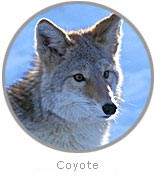 It is unclear what within the youthful psyche of man, beast or vegetation makes them so easily seduced by a dare, but the behavior is predictable and Perry was no exception. So the adolescent cactus began the perverse process of pulling in every one of his needles. He became astounded at the world which opened up to him when he no longer presented a defensive barrier. A roadrunner stopped just to visit. A rattlesnake wrapped itself around the plant and gave it a gentle hug before slithering on. It is unclear what within the youthful psyche of man, beast or vegetation makes them so easily seduced by a dare, but the behavior is predictable and Perry was no exception. So the adolescent cactus began the perverse process of pulling in every one of his needles. He became astounded at the world which opened up to him when he no longer presented a defensive barrier. A roadrunner stopped just to visit. A rattlesnake wrapped itself around the plant and gave it a gentle hug before slithering on.
That night all the coyotes in the valley howled the news about the smooth cactus and the lines of the curious began to form. In the past, Perry would have made bristling remarks to anyone who came near. But now, vulnerable, he was forced to try being civil. To his astonishment, it worked. Each time he was tempted to say something derogatory, he would swallow a tiny pebble instead to remind himself that he must swallow his unkindness. As Perry became a more accomplished communicator he discovered that he could stand his own ground and still be respected and even liked by others.
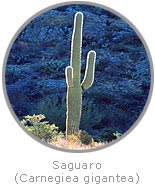 Perry’s greatest test of all presented itself one day in a most amazing way. A dust storm arose and began to shake all the plants violently, threatening to pull them from their roots. By this time all of Perry’s needles were within him and he had swallowed many pebbles. As the wind became more and more fierce, the little cactus began to shake and the most amazing sound ensued. The pebbles passing through the needles made a very unique music that Perry had never heard before. The dust storm, upon hearing the sound, receded. Soon thereafter, the heavens released the water like manna upon the desert and all in the valley were saved. Perry’s greatest test of all presented itself one day in a most amazing way. A dust storm arose and began to shake all the plants violently, threatening to pull them from their roots. By this time all of Perry’s needles were within him and he had swallowed many pebbles. As the wind became more and more fierce, the little cactus began to shake and the most amazing sound ensued. The pebbles passing through the needles made a very unique music that Perry had never heard before. The dust storm, upon hearing the sound, receded. Soon thereafter, the heavens released the water like manna upon the desert and all in the valley were saved.
Amid the ensuring celebration of life, a curious cactus asked, “What made the dust devils go away?”
And the other cacti, who had previously been mocking their disarmed companion said, "Why Perry did when he made the wonderful sound—the celestial sound of RAIN!" And so an important lesson was learned that day. From then on, whenever they needed the healing power of the raindrops, Perry did his dance and always the rain heard and came to them.
It Follows:
Only when we retract the barbs of defensiveness and ingest the stones of insecurity are we available to the nurturing of those who love us enough to tell us the truth.
The Rain Stick was written and narrated by Julie Reder Fairley. Character voices were provided by Matthew Linden, Anthony Reece and Evelyn O'Dwyer. This parable is dedicated to Julie's daughter.
|